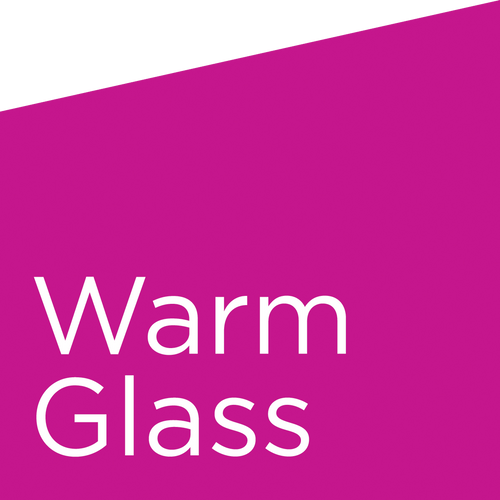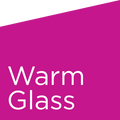
Firing Tips
Having problems with your firing? Here we answer the most commonly asked questions about firing glass in a kiln.
What is the best temperature to fire Bullseye glass to?
We generally fire a full fuse to 804°C - full details of firing schedules are accessed from Kiln Schedules page in the Knowledge Base. Firing schedules for using Bullseye glass in our casting and slumping moulds can be found on the product page for each individual mould.
Will my glass change colour when I use it for casting?
Glass can change colour when it is used for casting, but it depends on the conditions inside the kiln and the shape of the object that you are casting.
Colours with Bullseye codes starting with 11-- or 14-- may appear black if used in certain thicknesses, as they are already extremely colour-saturated.
Transparent glasses that rely on cadmium, selenium or sulphur to create their colours are more sensitive to heat, and may turn opalescent if exposed to excessive heatwork.
The type of glass used also affects colour - a piece made with billet will have much better colour clarity compared with a piece made from frit, as when using a billet there is no space for air bubbles to form between glass particles. See Tipsheet 8: Basic Lost Wax Kilncasting for more information on selecting appropriate glasses for casting.
How large can my casting be?
A casting can be as large as the interior of your kiln will allow, but as a general rule of thumb the interior of the kiln should be twice the height of the final casting. Something important to bear in mind, especially for large castings, is that the piece must be heated and cooled uniformly to minimise the risk of suckers or thermal shock.
What firing schedule should I use for casting?
Firing schedules for castings vary greatly depending on the mould type you're using, the process you're using and the glass you're using. Bullseye TipSheets are very helpful for casting advice. Find them in the Glass Techniques section on our How To... Kilnforming Guide page.
What is the best temperature for firepolishing?
Firepolishing can happen anywhere from 593°C to 804°C, but the right temperature for different pieces depends on things like glass colour, rate of heating, and how much the surface has been coldworked. Firepolishing can also be achieved during slumping.
What temperature should I use to slump glass?
There is no specific slumping temperature, as each glass project varies so much and has so many contributing factors. Generally, slumping temperatures are quite low and are held for a longer length of time than other processes in order to allow the glass to slowly sink into the mould. Bullseye have created many 'TipSheets' which offer very comprehensive advice for slumping all kinds of shapes - find the one you're looking for here.
How do I know what temperature I should use for different kilnforming techniques?
There are no specific temperatures for any kilnforming techniques, as different pieces will have completely different properties, and will therefore require completely different firing schedules. Please look at our Kilnforming Guides for basic information about each different technique.
What is the best temperature to fire Bullseye glass to?
We generally fire a full fuse to 804°C - full details of firing schedules are accessed from Kiln Schedules page in the Knowledge Base. Firing schedules for using Bullseye glass in our casting and slumping moulds can be found on the product page for each individual mould.
When using my pendant pod mould, each pendant has come out with spikes of glass round the edges. How can I prevent this?

Jewellery and pendant moulds can make great pieces even using scrap glass. The main trouble people have is the glass spiking on the edges of the mould. The spikes are caused by the glass getting caught on the side of the mould as it melts. This can be solved either by using fine frit as the filler or piling the glass up like a pyramid in the centre so that it melts from the centre outwards.
Can you give me any tips on using a drop-out mould? Do I need to flash vent the kiln?
You do need to cool the glass rapidly to stop it dropping, this is done when you can see the glass has dropped to the point you were hoping.
Our Top Tips when using drop outs:
The blank should cover the outside diameter of the ring but not hang over the edge.
For drops under 10cm the optimum thickness of the blank is 6mm to 9mm.
For drops over 10cm the optimum thickness of the blank is 9mm to 12mm .
Fire the blank on a basic full fuse and anneal correctly for the thickness of the glass.
Use Bullseye separator on the dropout ring and also 1mm fibre, cut 3mm back from the ring edge.
The optimum top temperature is 650°C to 700°C depending on your kiln, glass thickness and how much you want to drop.
In plugin kilns remove the shelf for longer drops but remember to protect the base of the kiln with fibre paper.
Can you use casting moulds in a microwave kiln?
In a word, no. Not only is it really hard on the moulds and may cause them to shatter, but the thicker glass of a casting will not anneal properly. The casting could shatter in the kiln or worse yet, it could shatter for no apparent reason weeks later. We don't recommend using a microwave kiln for any glass fusing or casting work as the temperature cannot be controlled well enough to anneal the glass properly.

